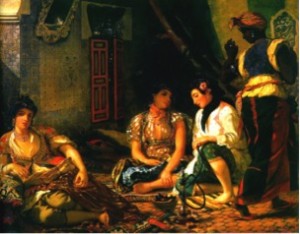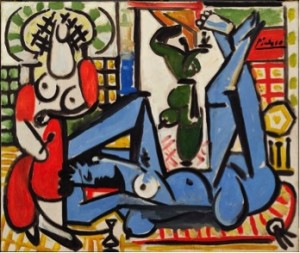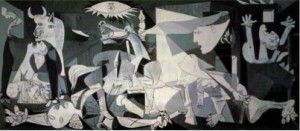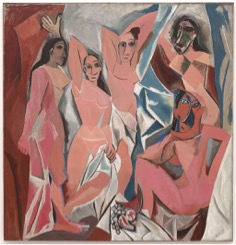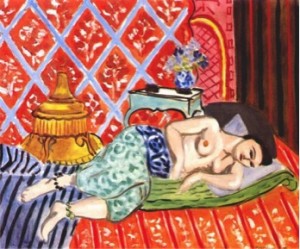Having returned last week from Nice and Antibes, where AHA ran a tour of 20th Century art in the South of France, it was nice to be reminded of Picasso when learning that a new record for the sale of art has been broken.
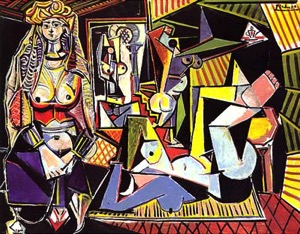
Above: The Women of Algiers – Version O by Picasso, 1955. Sold for the grand sum of $179m
The picture sold is the last of a series of 15 paintings (version A – O). It’s interesting because these paintings are a sort of essay on a painting by Delacroix of the same title.
There are 15 versions in the group, for instance:
Have a look at the whole collection here, it’s fascinating.
From Picasso in 1955 to Ai Weiwei in 2015 … a competition
For a bit of fun, I wonder if anyone would like to pick one of the 15 versions and tell us why they prefer their choice – the best reply will get a free place to our Ai Weiwei Day (date in October tbc ) which will include a lecture, lunch and entry to the upcoming and soon to be celebrated autumn exhibition at the Royal Academy. Give it a go. Usually, hardly anyone has a go at these things, so your chances are good. If you cannot make the date, we will give you another lecture day when you can come. Competition ends 15th June 2015.
One would have to work quite hard on these images to unravel what is meant by them and where they fit; but nevertheless pictures like Guernica (1937) and Les Demoiselles d’Avignon (1907) spring to mind in the use of fragmented form and space.
Was Pablo thinking of Eugène or Henri?
Most striking to me is Picasso’s seeming reference to Matisse, who was also fascinated by North Africa and who went there many times in the 1930’s. Matisse was following Delacroix in a shared fascination with the Orient. I think it was the sensuous, foreign, patterned and colourful nature of another world that absorbed both Delacroix and Matisse.
Picasso knew Matisse well – there was a friendly admiration and rivalry between them. On their last meeting, Matisse notes afterwards that Picasso “saw what he wanted to see. Now he will put it all to good use.” I wonder to what extent The Women of Algiers series, painted just some 100 days after the death of Matisse, is a homage to Matisse rather than Delacroix.

